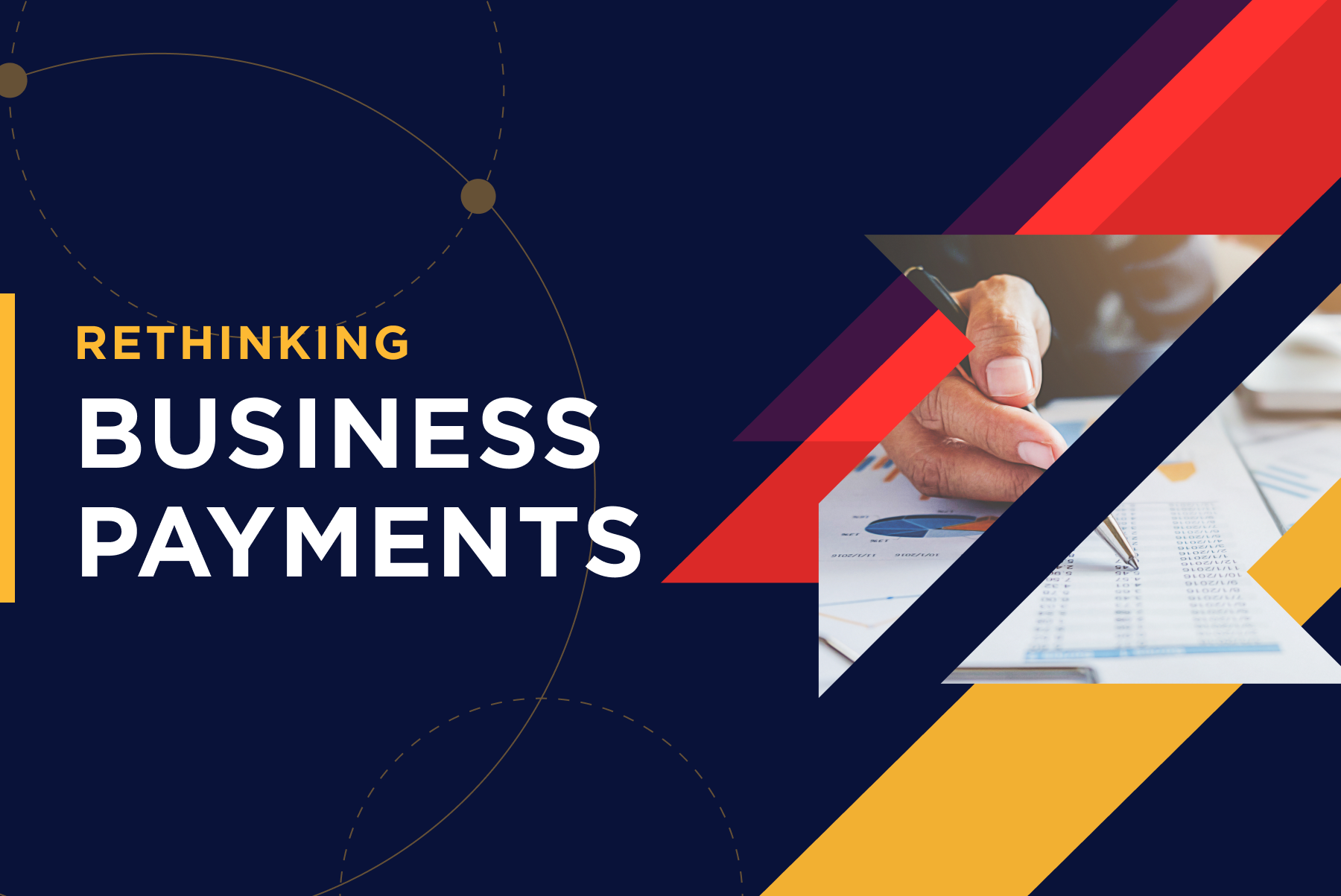.png?width=869&name=Top-Blog%201of7%20(1).png)
Winning in the global economy requires businesses to be faster and smarter than ever.
Billions of transactions happen every day. An eye-popping $22 trillion in business-to-business payments will be made in North America alone this year. Moreover, data volumes are exploding. Taking a cue from consumers, businesses expect access to information, at any time, from anywhere.
But the way that businesses pay and get paid has not kept up.
.png?width=1000&height=265&name=Body-Blog%20(1).png)
Operational and Financial Challenges Businesses Currently Face
Businesses of all sizes use cash and checks to pay for goods, rely on back-and-forth e-mails to resolve disputes, and use spreadsheets to manage payment terms and manually reconcile invoices.
These types of inefficient processes, combined with multiple closed-loop payment systems, create big operational and financial challenges with B2B payments – at a time when they can least afford them.
Lack of Efficiency
Payment inefficiencies can delay delivery of goods of services, strain trading partner relationships, disrupt cashflows, and stunt or even stop business growth. But traditional approaches to B2B payment processing are inefficient. Resolving order and pricing discrepancies is burdensome for buyers and sellers.
Buyers must conform to each supplier’s invoice and payment processes. Payments must be manually reconciled. And 50 percent of business payments are made by check, increasing inefficiencies for buyers and sellers.
High Costs
Processing checks, matching payments to open invoices, and reconciling accounts make accounts receivable an expensive function. Things are not much better in accounts payable. Much of an accounts payable pro’s day is wasted on manual tasks. Compared to electronic processes, manual processes costs $22 more per transaction.
Onerous Reconciliation
Sixty percent of corporate treasurers say manual processes are their top challenge. Manual reconciliation is one of the biggest burdens in accounts payable and accounts receivable departments.
Sixty-two percent of accounts payable leaders say that a high percentage of invoice exceptions is their top pressure.
For their part, 35 percent of suppliers say that 40 percent of their invoices require manual reconciliation.
Strained Trading Partner Relationships
No one is happy with the way the business payments get done. Seventy-two percent of buyers experience stress, delivery delays and damage to supplier relationships because of inefficient invoice and payment processing. Conversely, a poor receivables experience can jeopardize valued customer relationships.
Cashflow Disruptions
Delays in approving and processing business payments can disrupt cashflows. Ninety-one percent of business-to-business merchants in the United States experience late payments by their business-to-business customers. That is one reason that many small businesses rely on short-term financing solutions to get paid. And late payments are a contributor to the 50,000 small and mid-sized businesses that fail each year.
Inadequate Visibility
Seventy-nine percent of finance executives seek more accurate cash data and forecasts. But paper processes, closed-loop systems and a lack of ERP integration make it difficult for buyers and suppliers to know where things stand with their payments. It is hard to accurately forecast cash needs.
Buyers can never be sure when checks will be deposited. Similarly, suppliers can never be sure when a check will arrive – and service cuts to the U.S. Postal Service make it harder. All this unnecessarily stresses working capital.
Risk
The high cost of check fraud has been well-documented. But checks are not the only vulnerability with traditional approaches to business payments. Business have lost a total of $3 billion from payments made to fraudsters through business email compromise. Bad actors are getting better all the time at impersonating legitimate suppliers and payment approvers.
What is more, sharing and maintaining supplier bank account information is risky. Having large amounts of cash on hand to pay for deliveries puts the security of a buyer’s receiving staff at risk. And carrying lots of cash and checks puts drivers at risk.
Staff deficiencies are not to blame for these issues. The problem is the way payments are done.
Real change cannot happen until businesses rethink their approach to paying one another.
This article is part 1/7 of our B2B REVOLUTION series where we explore the current B2B landscape and the next evolutionary phase in payments.
- #1 Rethinking Business Payments: Operational and Financial Challenges
- #2 Why B2B Payments are Complicated - How Businesses Pay and Get Paid
- #3 Why are B2B Payments so Fragmented? The Critical Role of Standardization
- #4 The Future of Business Payments – A2A Automation
- #5 Faster, Smarter Business Payments – How We Can Optimize B2B Payments
- #6 A2A Automation - Connecting Buyers and Suppliers for Frictionless Payments
- #7 A Game-Changing Solution – How A2A Automation Benefits Banks




